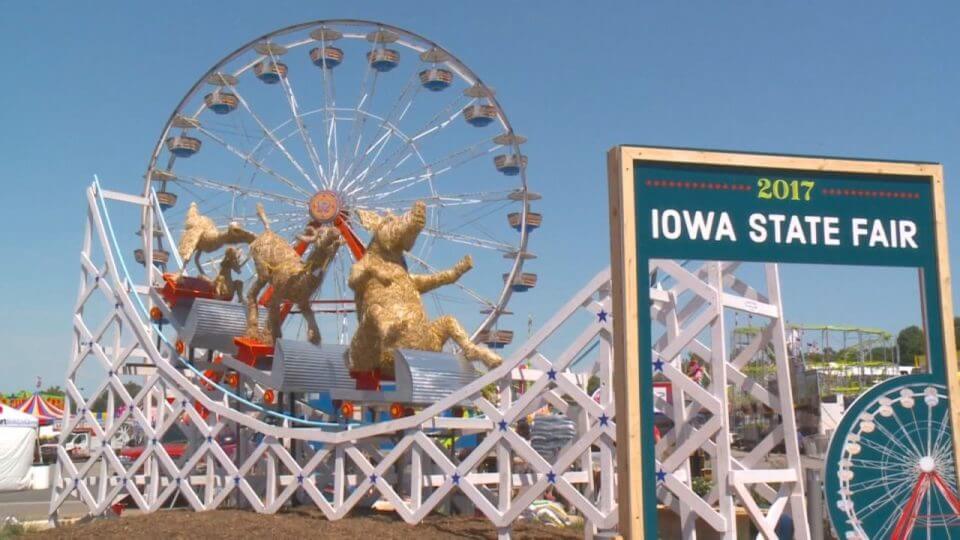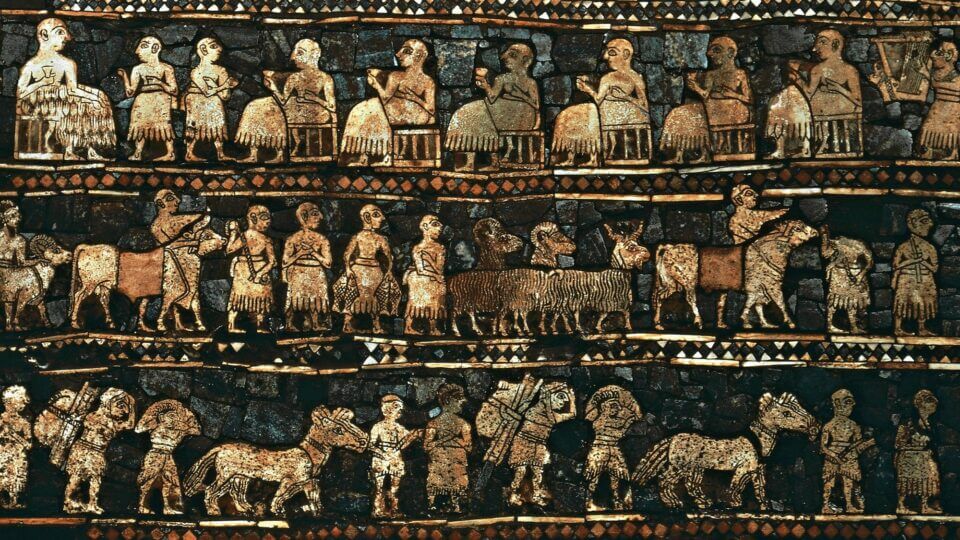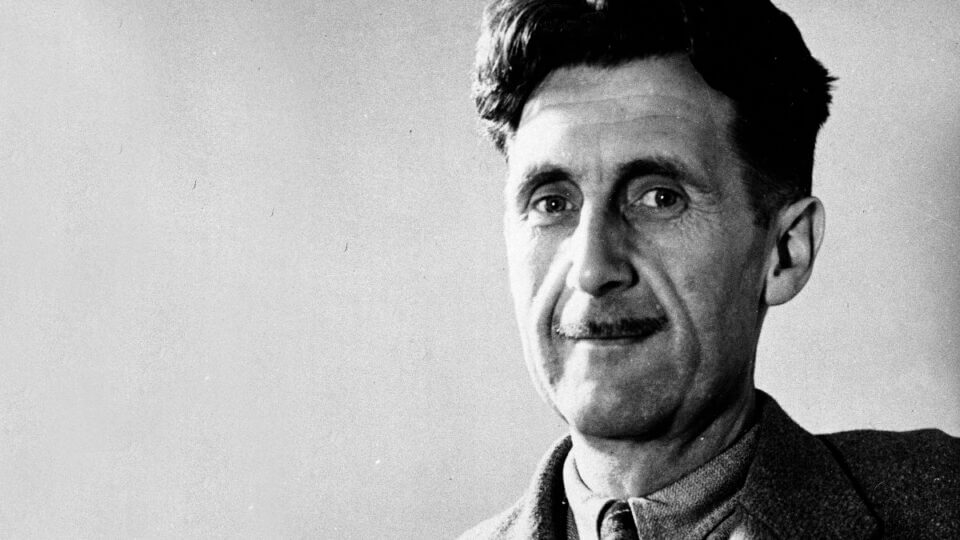
What factors make Iowa in play for both Republicans and Democrats?
Iowa, “the Hawkeye State,” is famous for its role as the gatekeeper in American presidential elections, both during the primaries and the general election. A strong showing in its caucuses—which are the first to be held each election season—can propel a candidate to the head of the pack, while a lackluster one can spell an end for Oval Office ambitions. More importantly for this piece, however, Iowa also has the honor of being on the ever-debated list of “swing states,” or states that are up for electoral grabs for both political parties.
It just about certain that come 2020 Democratic hopefuls will spend much of their time in this state, as every candidate has done in the past. What’s uncertain for many though, is why exactly Iowa is considered a swing state in the first place. Unlike cut-and-dry electoral situations like deep blue California and dark red Idaho, Iowa is much more complicated.
Iowa’s status as a swing state is actually relatively recent; Iowa has only been seen as “in play” since the late 1980’s, having voted Republican in the vast majority of elections since it gained its statehood in 1846. From 1988 through 2016, Democrats have won six out of eight total presidential contests. This means that in order to provide a satisfactory explanation towards Iowa’s “purple” standing, we have to explore the state’s past in detail.
Iowa began as a territory, with growth fueled primarily by American Westward expansion. Unlike many of its fellow Midwestern territories and states, however, Iowa harbored less resentment towards immigrants and advertised itself across the globe as the premier destination for foreigners to start a new life. One such campaign was “Iowa: The Home for Immigrants,” which was translated into a litany of languages. This effort was extremely successful, and Iowa ballooned from a territory with about 40,000 citizens in 1840 to nearly 2,000,000 in 1890; more than 320,000 of those people were foreign-born, and that doesn’t include the hundreds of thousands that had come in decades prior and became naturalized.
As opposed to its much more liberal and much more Nordic neighbor, Minnesota, Iowa was the destination of choice for Germans, Protestant ones in particular (Catholics made up a third of the populace). In fact, from the mid-19th century through the 70’s, Germans consistently made up the largest amount of the state’s foreign-born population, with over one-half of all Iowan farmers able to claim German descent by 1920.
Immigrant ethnicity is an extremely important factor to point out, as much of Iowa’s political leanings are explained by observing its correlations, as opposed to simply dismissing the populace as merely “white.” German Protestants were very strong Republican voters, while their Catholic counterparts tended to support Democratic candidates. Eventually, after Democratic presidents Woodrow Wilson and Franklin D. Roosevelt declared war on Germany in World Wars I and II, respectively, the latter group joined the Republican Party. This can be clearly seen by analyzing the Presidential elections from 1916 on; aside for FDR’s first two terms—which garnered broad Iowan support because of Republican President Hoover’s blunders with the Great Depression and the Dust Bowl—Iowans voted the way of their German Republicans until 1992 (aside from an LBJ victory in 1964).
The German majority wouldn’t remain forever though. Beginning at the end of the 70’s, Iowa’s Latino population—specifically Mexican immigrants—began to spike; it had become a “New Gateway” state, ranking 11th in the nation for Latino growth. Consequently, Iowa started to become much more Blue.
In addition to the German immigrant majority crumbling, the Midwest during the 80’s was rocked by the Farm Crisis, which greatly accelerated the decline of farm operators in the state; from the 60’s through the 80’s, the number of Iowa farmers plunged by 38%, and although their income did increase, it did so at a fraction of the rate of other professions. In total, about 147,000 Iowans fled the state, many of whom would have otherwise voted red. This population exodus, combined with a resentment for the latter half of a Reagan Administration that they perceived had been doing little to help them, culminated in Democrat Michael Dukakis’ 54.71% to 44.50% 1992 victory over Republican George Bush Sr. in Iowa.
Also, Iowa’s cities started their trend of rapid growth as the state worked towards transitioning towards a more diverse economy after the Farm Crisis. Through mechanisms such as the Iowa Department of Economic Development (which is now the Iowa Economic Development Authority), business boomed and now, 64% of its population actually lives in urban areas, in large cities like Des Moines, Cedar Rapids, and Davenport. For comparison, Des Moines is only 10,000 people short of beating out Richmond, VA and is already bigger than Rochester, NY, Albany, NY, and Salt Lake City, UT. It is also bigger than every major city in Connecticut, which includes the more well-known locales of Bridgeport, Stamford, and New Haven.
Why then, is Iowa not handily Democratic?
Because although the Des Moines metropolitan area is among the fastest growing in the Midwest, its Republican-voting suburbs are expanding just as quickly. Ankeny, for example—one of Des Moines’ conservative suburbs—was the fourth-fastest growing city in the entire United States during 2017. This distinguishes it greatly from liberal Midwestern bastions like St. Louis, where, despite voting overwhelmingly Democratic, the city itself is actually shrinking while its suburbs begin to outpace it.
Also, it has also underwent what rung the bell of the former Bellwether, Missouri—a shift of white, socially conservative, working-class voters from the Democrat to the Republican Party; according to an NPR study, both the populaces of Iowa and Missouri have a similar percentage of those who consider religion to be “very important,” so it makes sense that the former would be affected as well. This phenomenon is largely because the national Democratic Party has tilted much further left than the typical “Midwestern” Democrat. Evidence of this can be seen through Iowa’s recent gubernatorial election—the Democratic nominee, Fred Hubbell, who was described by Politico as a “centrist,” only lost by 3%, or 40,000 votes, in the face of his opponent’s strong help from President Trump. This certainly counters cries from the media that Iowa has swung too far to the right.
Another large factor is Iowa’s location within the Western End of the Rust Belt, a little known, yet important aspect of the state. Eastern Iowa tends to vote Democrat, but its Rust Belt status makes this area susceptible to the Trumpian wing of the Republican Party. President Trump beat former Secretary Clinton by nearly 10% in 2016, turning much of the East red.
With a political culture fueled by its unique caucus system—and thus, a greater proclivity towards discourse and bipartisan discussion—and a healthy blend of demographic factors, Iowa is one of the most fascinating states in America come election season. In the future, pollsters and pundits should observe the effect that its current brain drain will have, as well as the tariffs from President Trump’s economic policy; Iowa will continue to shift, and further research will enable us to better anticipate those changes, both with the Hawkeye State itself and other states like it.
Matthew Pinna is a student at the University of Chicago.










